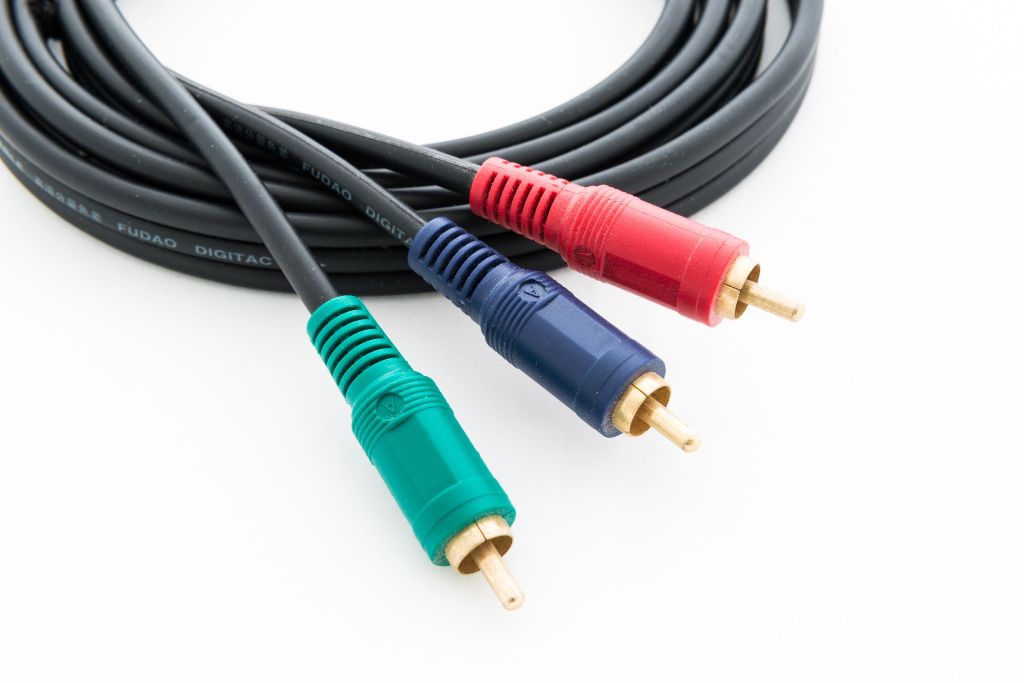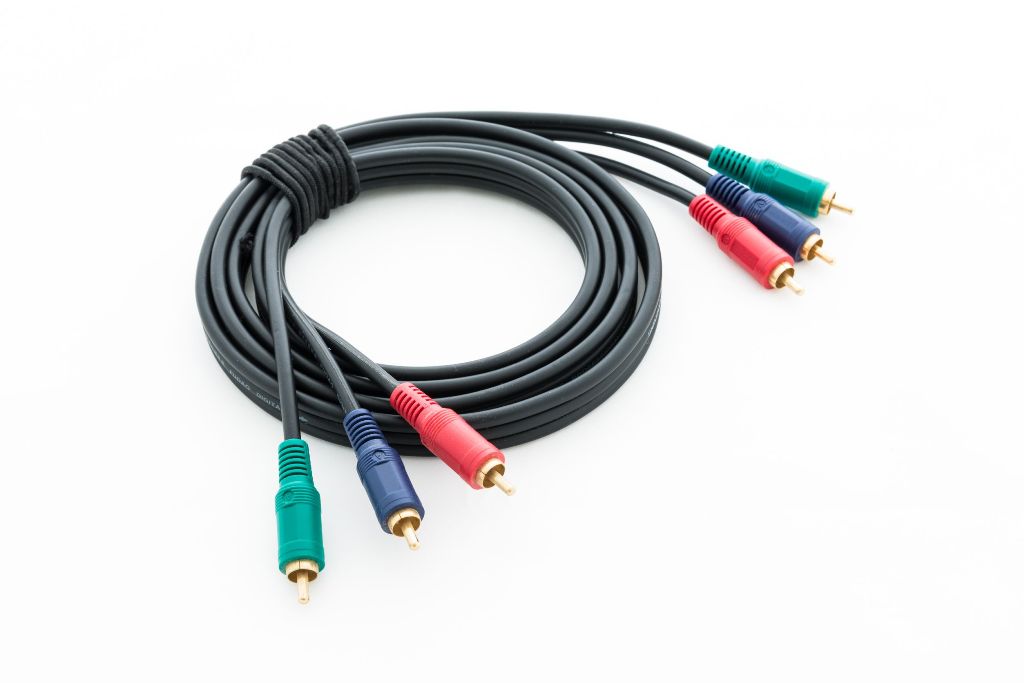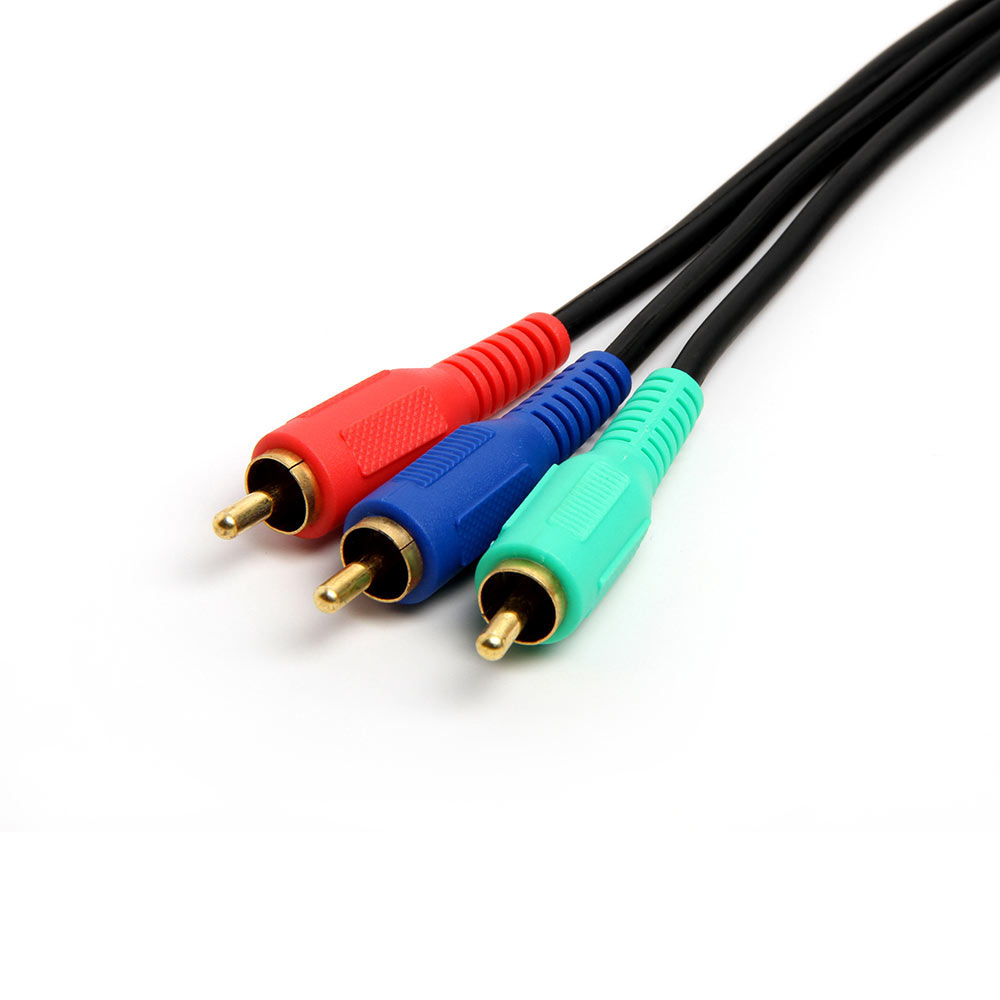Learn About Component Video Cable 3 And How It Works Best
Cmple.Com Inc. - nation-wide manufacturer & retailer of Home Theater and IT products. Highest-quality electronic accessories at affordable prices.
Here’s the situation: there are three RCA jacks on the back of your television, and you’re holding a cable with three RCA plugs in your hand. The colors are different – red, blue and green on the jacks, red, white and yellow on the plugs – but the connectors fit just fine, so you plug them in and turn on the TV.
And there’s no picture on the screen. What went wrong?
It’s simple; you’ve fallen into the same trap that millions of others have. There are two types of analog cables that can connect between source and TV (or other device) that have similar names and identical connections, but they’re not necessarily interchangeable. That’s why the colors on the plugs and television didn’t match. A yellow connector is for composite video, but the red, blue and green ones are for component video. They’re not even close to the same thing.
The reason there’s no picture on the TV, though, isn’t because of the cables themselves. It’s because you’re trying to use them to transfer the wrong signals. Once we dig a little deeper into the subject of component video and how it works, you’ll understand what was going on with the cables and the lack of a picture.
What Is Component Video?
The term “component video” is actually a perfect description. When an analog video signal is sent by optimal means from one place to another, the color information is split into three distinct components which are collectively called “YPbPr.” There’s the “luminance” component that controls brightness and also delivers control pulses to synchronize the picture (the “Y” component transferred by the green cable), and there are two “color difference” components known as red-minus-luminance (known as “Pr” and carried on the red cable) and blue-minus-luminance (known as Pb and carried on the blue cable). The three component signals are reassembled at the TV to display a high-definition picture.
Contrast that with composite video, which combines all three of those signals into one. That signal is then transferred through the familiar yellow cable which plugs into the “video in” jack on a TV – and since that process requires a lot of information to be sent on just one cable and then decoded, it’s much less efficient. For that reason, composite video can’t transfer high-definition video, only standard definition.
Incidentally, one major source of confusion between component and composite is due to the fact that each type of signal is normally transmitted on a bundle of three cables. But there’s only one video signal on a three-cable composite bundle; the other two red and white cables are for audio. All three cables on a component bundle, however, are for video signals. (There’s a better – and more complicated – way of delivering video with more component signals, and there are also component video cables that are bundled with two audio cables, known as “component video cables 5.” The most common method, though, uses the green, blue and red cables we’ve discussed, which is why those bundles are often called “component video cables 3.”)
You may be wondering how component and composite compare to HDMI. Well, start with the fact that composite video (the one with the single yellow cable) can’t deliver high-def signals, while HDMI and component video can. OK, so that leaves us with HDMI and component. HDMI delivers digital signals and component video is an analog format. Obviously, HDMI is better, right?
Not so fast. In the majority of cases you’d be right, but there are exceptions. First, there are some types of video equipment which beg for component cables. A good example is a DVD player, because DVDs are recorded in the same YPbPr format that component video utilizes. That’s why you’ll often find that DVDs look better when the player is hooked up with component cables instead of HDMI ones. Another consideration is the distance between a piece of equipment and the television or monitor, because video sent over long runs of HDMI cable tends to degrade after about 50 feet. Analog cables, including component ones, are much more forgiving and likely to deliver a higher-quality signal over long distances.
Then there are the color and quality differences between video signals, each of which have their own distinct “personalities.” The calibration of your HDTV may very well display some of those signals better when they arrive via HDMI, but other signals may benefit more from component video connections. You won’t know for sure unless you test them out.
So don’t automatically assume that HDMI cables are “better” than component video cables 3 just because they’re digital. You can get excellent high-def video from both. Just don’t try plugging one of the component cables into the yellow “video in” jack on your TV – that won’t work, as we discovered at the start of this article.
Buying Component Video Cables 3
You might be wondering whether you really need to buy separate component video cables 3, or if the red, white and yellow composite video cable/audio cables you already own are sufficient to make component connections. We hate to equivocate, but the honest answer is “Yes, but…”
Yes, composite cables will make satisfactory component video connections (as long as you plug them into the correct jacks). But no, the two types of cables are not always interchangeable. Some manufacturers save money when designing composite cables by using lower-quality conductors instead of coax for the less-demanding audio connections. That will lead to signal degradation if you use those cables to transfer component video.
Your best bet is to use only component cables for component video – and besides, the different colors on the plugs will ensure that you don’t mistakenly make the wrong connections.
As long as you purchase from a reputable cable manufacturer (like Cmple), you don’t have to worry too much about what’s under the jacket. Good component video cables 3 will have a solid-copper conductor inside RG59/U coaxial cable, with full shielding. This will guarantee an impedance of 75 ohms, effective protection against RF and electromagnetic interference, and no issues handling the required frequencies. The cables should have molded construction with gold-plated connectors; once again, those are all standard on component cables from trustworthy manufacturers.
Component video cables 3 only cost a few bucks (a little more if you need ones that will run 25 feet or more), and can deliver high-definition video that competes with the quality of HDMI. Consider that your “I had no idea!” fact for today.








